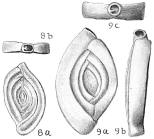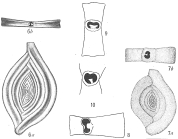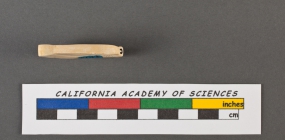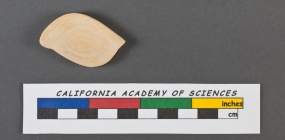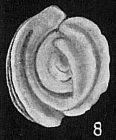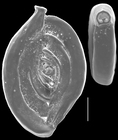Deep-Sea taxon details
Spiroloculina d'Orbigny, 1826
112046 (urn:lsid:marinespecies.org:taxname:112046)
accepted
Genus
Spiroloculina depressa d'Orbigny, 1826 (type by subsequent designation)
- Species Spiroloculina communis Cushman & Todd, 1944
- Species Spiroloculina depressa d'Orbigny, 1826
- Species Spiroloculina excavata d'Orbigny, 1846
- Species Spiroloculina robusta Brady, 1884
- Species Spiroloculina tenuiseptata Brady, 1884
- Species Spiroloculina pusilla Earland, 1934 accepted as Spirosigmoilina pusilla (Earland, 1934) (Opinion of Jones (1994))
marine, brackish
Orbigny, A. D. d'. (1826). Tableau méthodique de la classe des Céphalopodes. <em>Annales des Sciences Naturelles.</em> vol. 7: 96-169, 245-314., available online at http://biodiversitylibrary.org/page/5753959
page(s): p. 298 [details]
page(s): p. 298 [details]
Hayward, B.W.; Le Coze, F.; Vachard, D.; Gross, O. (2025). World Foraminifera Database. Spiroloculina d'Orbigny, 1826. Accessed through: Glover, A.G.; Higgs, N.; Horton, T. (2025) World Register of Deep-Sea species (WoRDSS) at: https://marinespecies.org/deepsea/aphia.php?p=taxdetails&id=112046 on 2025-05-23
Glover, A.G.; Higgs, N.; Horton, T. (2025). World Register of Deep-Sea species (WoRDSS). Spiroloculina d'Orbigny, 1826. Accessed at: https://www.marinespecies.org/deepsea/aphia.php?p=taxdetails&id=112046 on 2025-05-23
Date
action
by
original description
Orbigny, A. D. d'. (1826). Tableau méthodique de la classe des Céphalopodes. <em>Annales des Sciences Naturelles.</em> vol. 7: 96-169, 245-314., available online at http://biodiversitylibrary.org/page/5753959
page(s): p. 298 [details]
basis of record Gross, O. (2001). Foraminifera, <B><I>in</I></B>: Costello, M.J. <i>et al.</i> (Ed.) (2001). <i>European register of marine species: a check-list of the marine species in Europe and a bibliography of guides to their identification. Collection Patrimoines Naturels,</i> 50: pp. 60-75 (look up in IMIS) [details]
additional source Loeblich, A. R.; Tappan, H. (1987). Foraminiferal Genera and their Classification. Van Nostrand Reinhold Company, New York. 970pp., available online at https://books.google.pt/books?id=n_BqCQAAQBAJ [details] Available for editors
page(s): p. 298 [details]
basis of record Gross, O. (2001). Foraminifera, <B><I>in</I></B>: Costello, M.J. <i>et al.</i> (Ed.) (2001). <i>European register of marine species: a check-list of the marine species in Europe and a bibliography of guides to their identification. Collection Patrimoines Naturels,</i> 50: pp. 60-75 (look up in IMIS) [details]
additional source Loeblich, A. R.; Tappan, H. (1987). Foraminiferal Genera and their Classification. Van Nostrand Reinhold Company, New York. 970pp., available online at https://books.google.pt/books?id=n_BqCQAAQBAJ [details] Available for editors
 Present
Present  Inaccurate
Inaccurate  Introduced: alien
Introduced: alien  Containing type locality
Containing type locality
From editor or global species database
Diagnosis Test ovate to fusiform in outline, with flattened sides and truncate periphery, microspheric proloculus followed by planispirally wound tubular second chamber of one whorl in length, later part of microspheric test and all of megalospheric test with chambers onehalf coil in length added in a single plane; wall calcareous, imperforate, porcelaneous; aperture at the open end of the final chamber, with simple or bifid tooth, commonly slightly produced on a short neck. U. Cretaceous (Santonian) to Holocene; cosmopolitan. (Loeblich & Tappan, 1987, Foraminiferal Genera and Their Classification) [details]Unreviewed
Habitat Known from seamounts and knolls [details]




